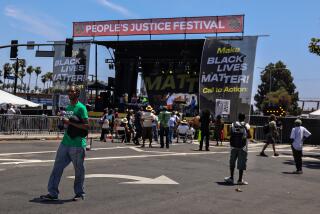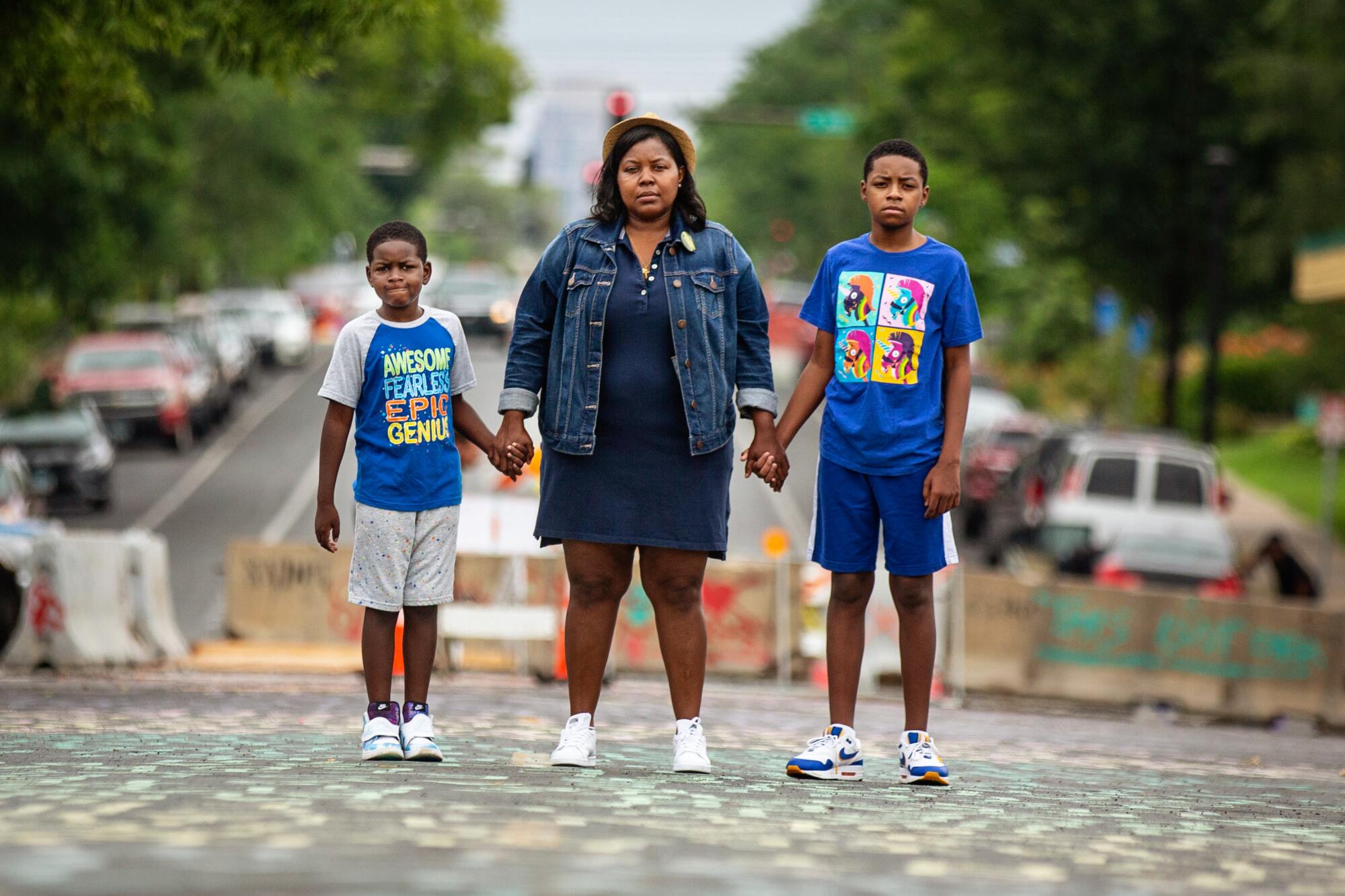
- Share via
MINNEAPOLIS — A squad car slowed as it drove past the charred remains of the 3rd Precinct police headquarters.
Outside, neighborhood activist Alicia Smith’s eyes traced the SUV’s route along the busy thoroughfare, keeping tabs as it disappeared from view.
It was here, in South Minneapolis, that George Floyd took his final breath nearly three months ago. It was here that a white officer assigned to the precinct kneeled on the Black man’s neck for nearly eight minutes while bystanders recorded video that would change the world.
Night after night, thousands of people packed into the streets near Smith’s home. They held candlelight vigils and prayer circles. They cried together and they chanted. One night, the protesters surrounded the 3rd Precinct building and, before long, it was engulfed in flames.
“What we saw in May, in the year 2020, was the lynching of Mr. Floyd on clear video camera by officers from this precinct,” Smith said on a recent evening outside the boarded-up structure, the metallic smell of melted iron still punctuating the air. “The cries of Mr. Floyd were the cries of Black people all around the country.”
The 37-year-old, who has lived in Minneapolis much of her life, stopped for a moment, as if trying to process the past few months as a Black person in America.
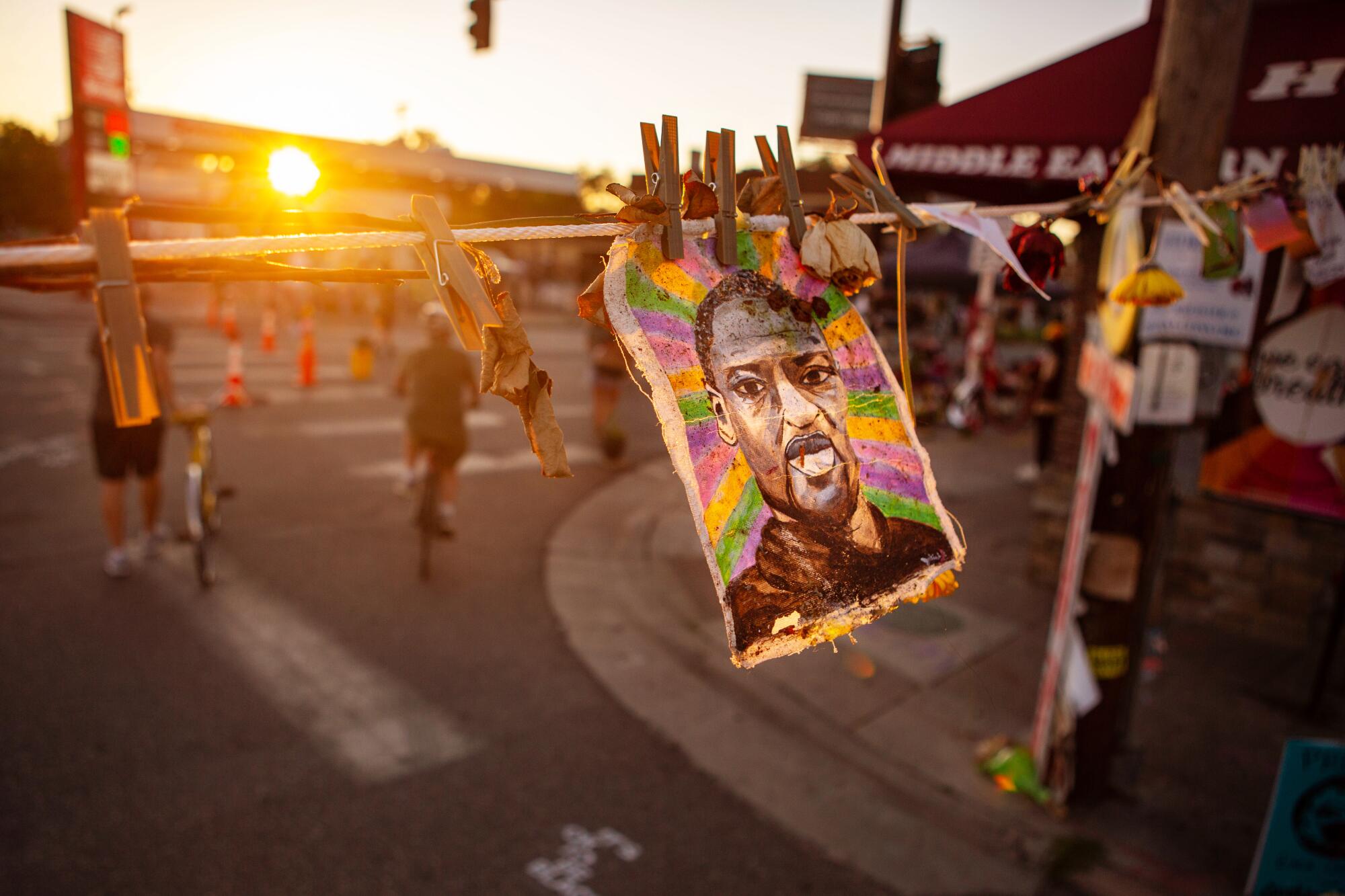
The protests here have slowed, but the short-term pain, the long-standing memories and the immediate problems remain, and in some ways, have intensified.
Between the trauma of watching Floyd’s final moments on video at the intersection of 38th Street and Chicago Avenue, witnessing COVID-19 disproportionately devastate Black Minnesotans, and knowing a tanking economy hits harder in her community, Smith feels like she and some of her neighbors are under attack day and night.
The sentiment is shared in Black neighborhoods nationwide as the latest chapter in America’s racial reckoning plays out inside corporations and classrooms, on professional sports fields and at virtual political gatherings. Inequities in healthcare and distance learning for children have come to the forefront alongside calls to end police brutality in a movement that has left some to question if Black lives in this country truly do matter and are more than just a catchphrase.
“When I hear, ‘Black lives matter,’ for me, it’s like, of course our lives matter — there has never been doubt,” Smith said. “When you hear those words now — when white people hear and say those words — it’s like right now in 2020 ... with the protests and health crisis, I wonder do people really get it?”
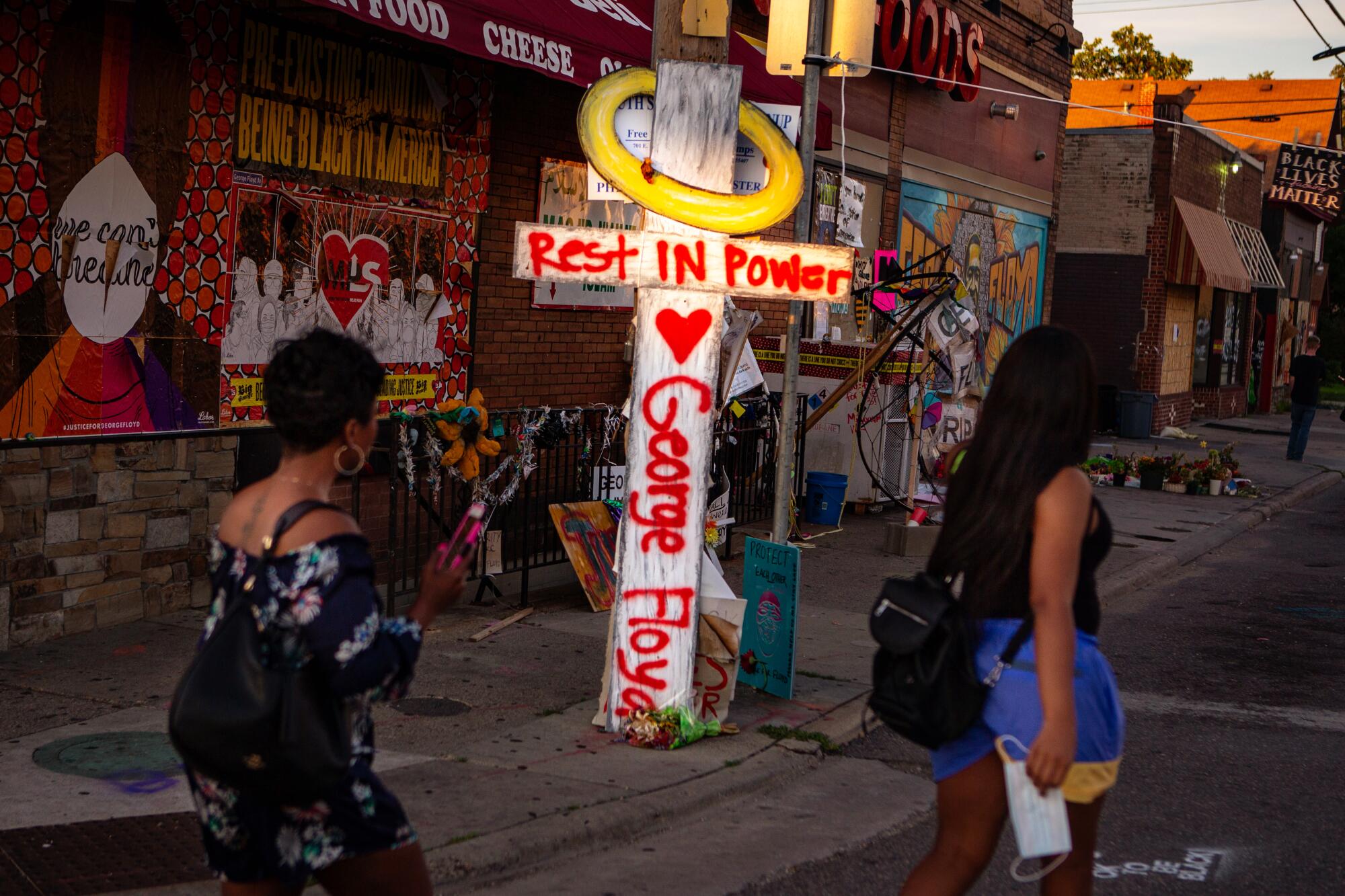
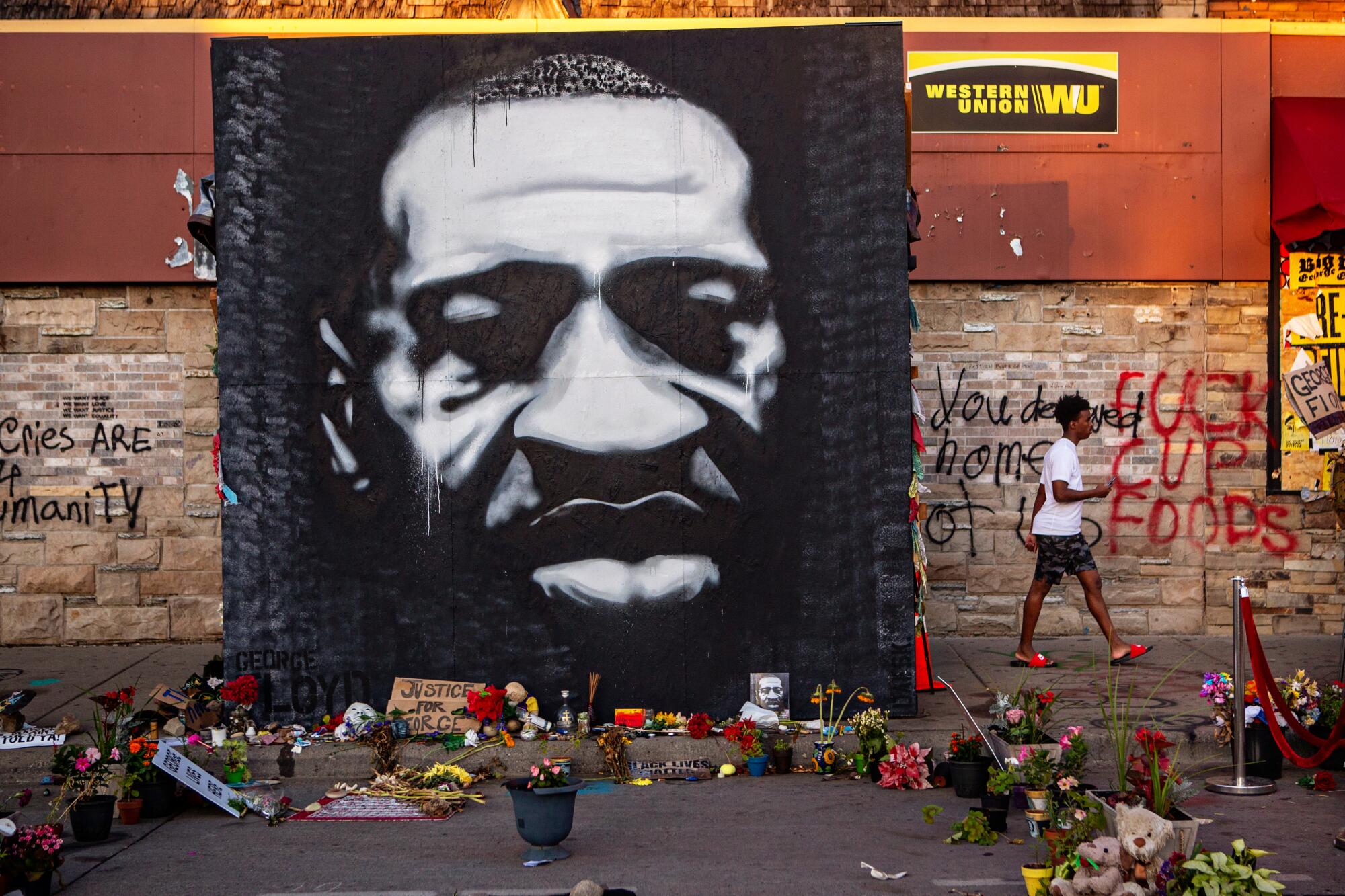
So much of society — of entrenched racism in systems of policing and healthcare and wealth — still seems to do real harm to Black people, she says, emphasizing that many others in her community are feeling the same sort of heaviness.
“It can be exhausting,” Smith said.
Benjamin Crump, a civil rights attorney who is representing the Floyd family and has over the years represented the families of dozens of unarmed Black men killed by police, has a term for it: “racial battle fatigue.”
“Black folks are hurting right now. The pain is real,” Crump said. “Coronavirus and police brutality. There is racial battle fatigue among us.”
:::
In Minnesota, 7% of the population is Black, and yet Black people account for nearly a quarter of all COVID-19 infections, according to state data. In Minneapolis, as in much of the nation, Black people are more likely to work in jobs considered essential — public transit, factories, retail — which cannot be done safely from home.
Those who do get sick face the reality that they are more likely to have underlying medical conditions and less likely to have adequate access to healthcare compared with white people. Studies have also repeatedly shown that when Black patients express pain or discomfort in a hospital, they are more often dismissed compared with complaints of white patients.
Two of the state’s most prominent Black politicians — Atty. Gen. Keith Ellison and U.S. Rep. Ilhan Omar — have both lost parents to the pandemic. (And weeks before his death, Floyd also tested positive for the virus.)
In early spring, Smith, head of the Corcoran Neighborhood Organization, was already operating in crisis mode.
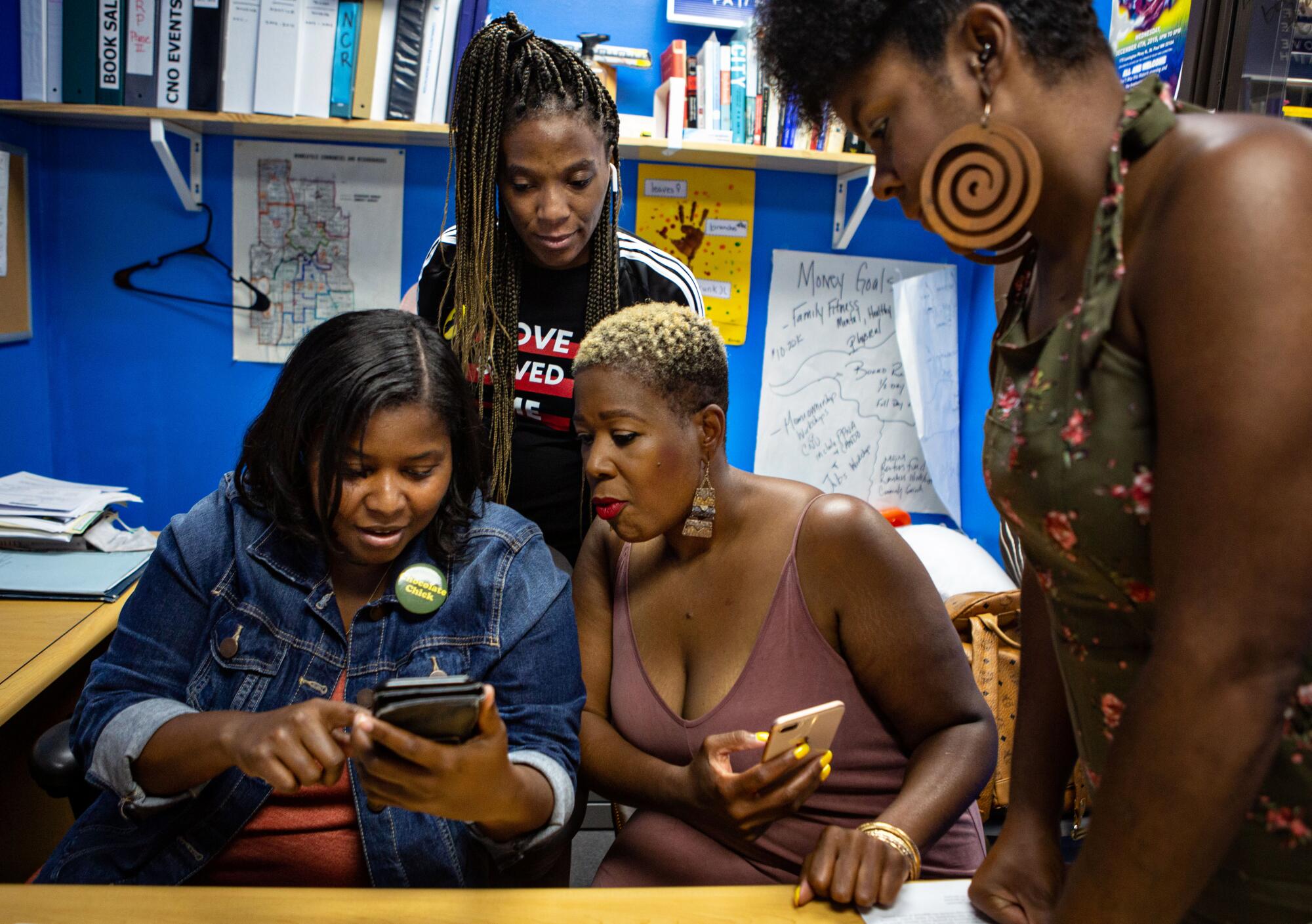
Every day, it seemed, she received a flurry of text messages from families in her neighborhood. Did she know where people with symptoms could get tested, they asked? She visited hospital parking lots to console families anxiously awaiting health updates.
With the economy in tatters due to shutdowns, job losses mounted. More and more people couldn’t afford to go to the grocery store, she said, so she converted her office into a community pantry.
With community donations, her staff bought supplies and began preparing food baskets of canned goods, fresh produce and bread. The community support inspired her, she said, noting that even people picking up food sometimes made modest donations.
“There is this feeling of, ‘If I need these groceries and I can pay a little, I will, in order to help others,’” she said.
And then came May 25.
Smith’s two sons — 11-year-old Walter III and 7-year-old Alonzo — had been attending school virtually since March, and she and her husband wanted to create some sense of normalcy for the boys.
So that day, the family went on a bike ride and ate ice cream at a Dairy Queen a few blocks from Cup Foods, where police confronted Floyd.
They laughed, and for a moment all seemed well in the world — family, late spring, flowers blooming, warm weather emerging.
That evening, she got a text from a neighbor saying that a Black man had been killed. “Ms. Alicia we need help,” it read.

It could have easily been her own boys, she thought, or her husband or even herself.
“It’s always on my mind,” she said, noting a deep history of pain in the city. In recent years, several Black men, among them Philando Castile and Jamar Clark, have been fatally shot by police in the Twin Cities area.
After putting the boys to bed that night, Smith walked to Cup Foods. All was quiet.
But the next morning, the video was on the internet and the officers on the scene were fired later that day. That night, thousands of people filled the streets, and images from South Minneapolis were broadcast into homes across the nation.
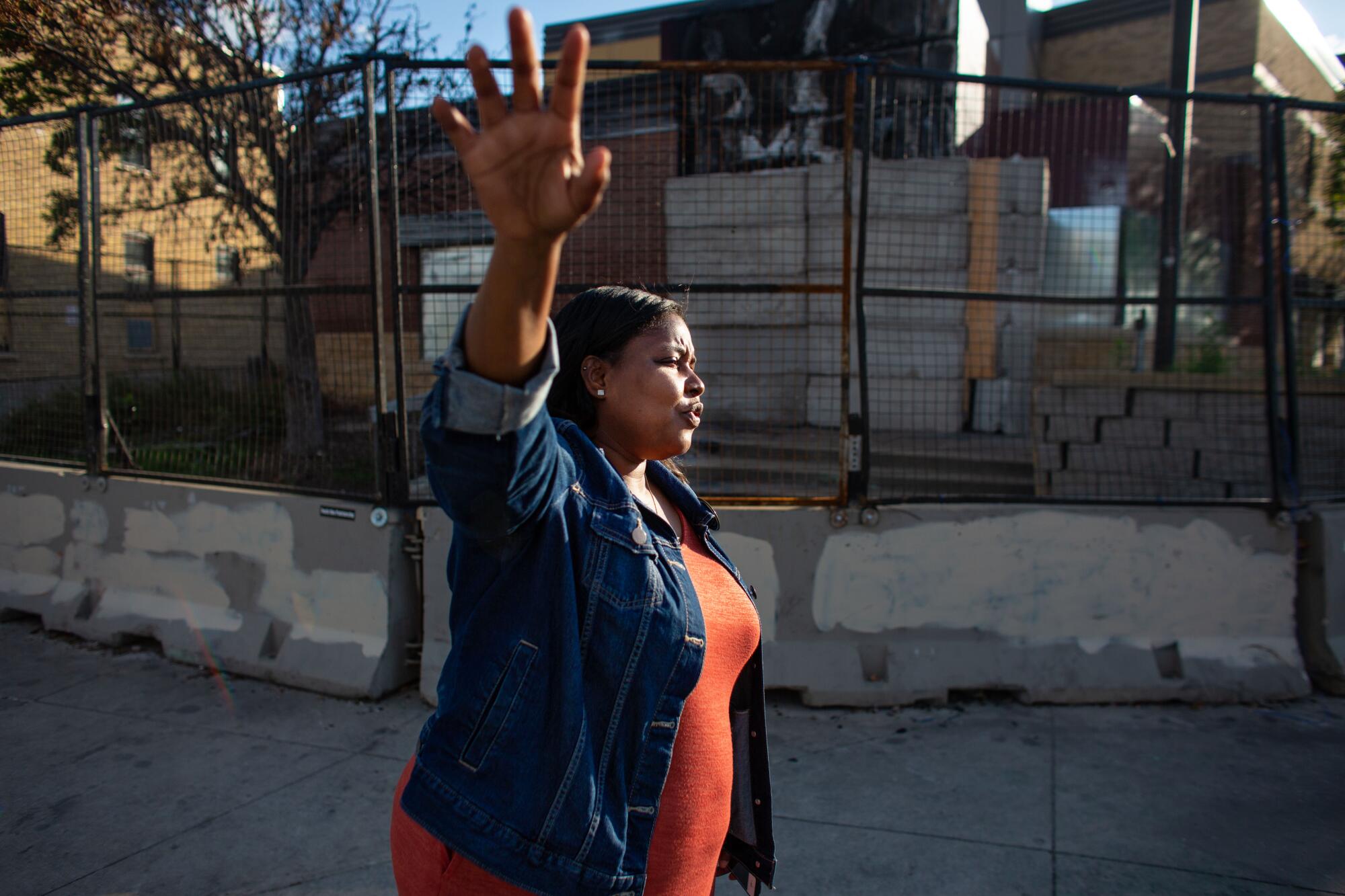
“There was already this heaviness and sadness with the virus, then George Floyd was murdered and the world totally shifted,” she said. “In a matter of hours, we had people from all over the state and region here in this neighborhood.”
Smith and Carmen Means, a local pastor who lives in the neighborhood where Floyd died, helped arrange news conferences for the local NAACP and marched with others the two miles from Cup Foods to the precinct.
On May 28, after a midafternoon march to the precinct, the two leaders along with several other women held a peace circle outside it. Uniformed officers with rifles peered down from the roof.
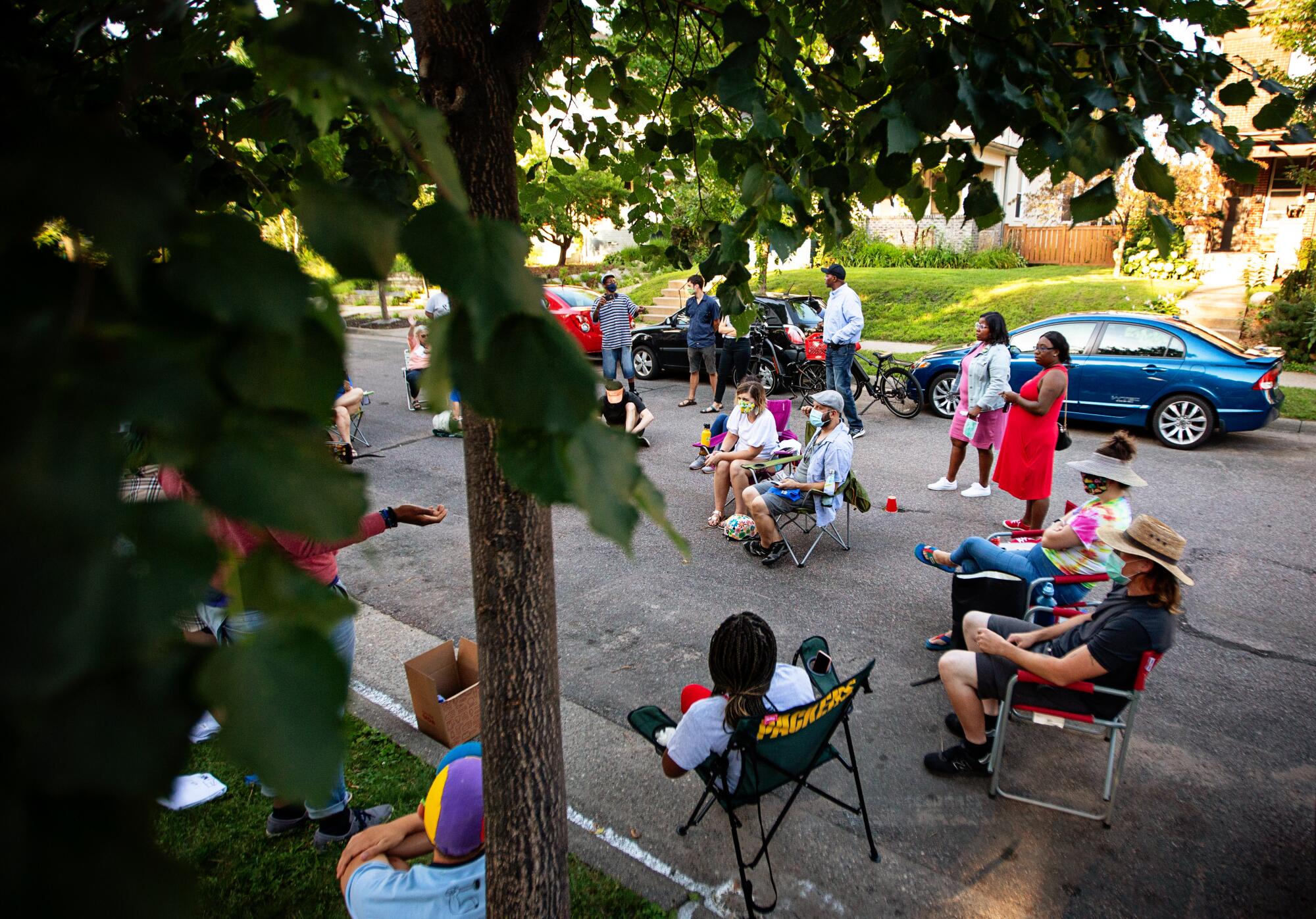
Smith, along with a few other Black women from the area, handed out diapers, water and canned food.
They left around 7 p.m., and soon after, the unrest began. While she walked home under thick canopied oak trees, Smith recalled, she noticed some men dressed in all black. She didn’t recognize them from the community.
“They were ready to wreak havoc,” she said.
Once she got home, Smith turned on the television and saw flames. She watched as someone tossed the table they’d used to distribute food earlier in the day into the fire.
:::
On a recent afternoon, the area around 38th and Chicago remained blanketed with memorials to Floyd. An iron Black Lives Matter fist the height of a streetlamp has been erected in the intersection, which is outlined by a flower garden. Outside Cup Foods, flower bouquets and cards sit stacked.
.
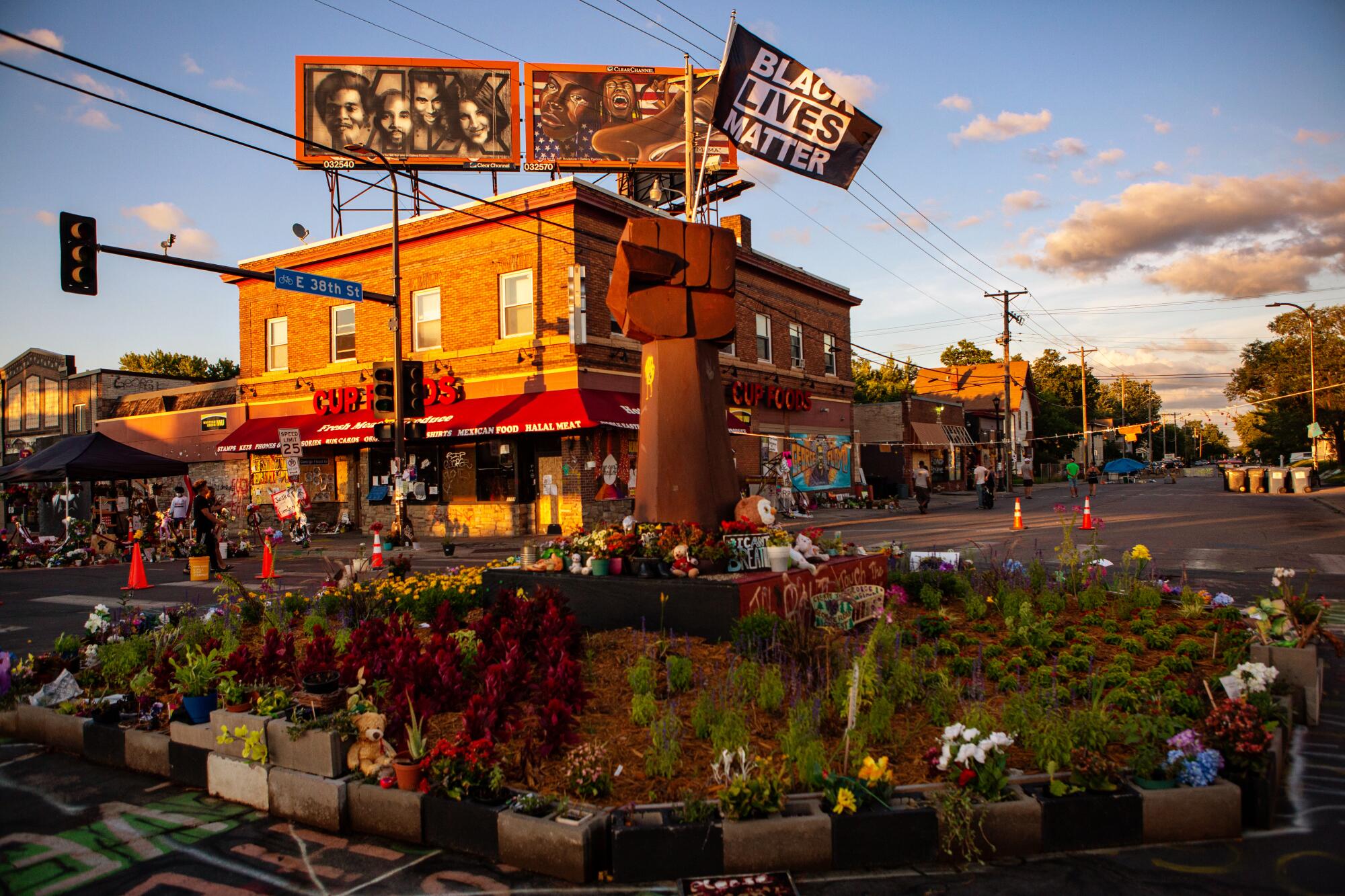
Each day, a steady flow of onlookers wearing masks still come to pay respects in the spot where Floyd’s life ended and a movement began.
One of the visitors was Means, the pastor, who said she only recently watched the video of Officer Derek Chauvin, now charged with second-degree murder, pinning Floyd to the ground.
“It’s too much, I could not bring myself to watch it,” she said. “Too much Black pain.”
She doesn’t like how the street outside Cup Foods has become something of a tourist attraction — people snapping a few selfies and quickly leaving.
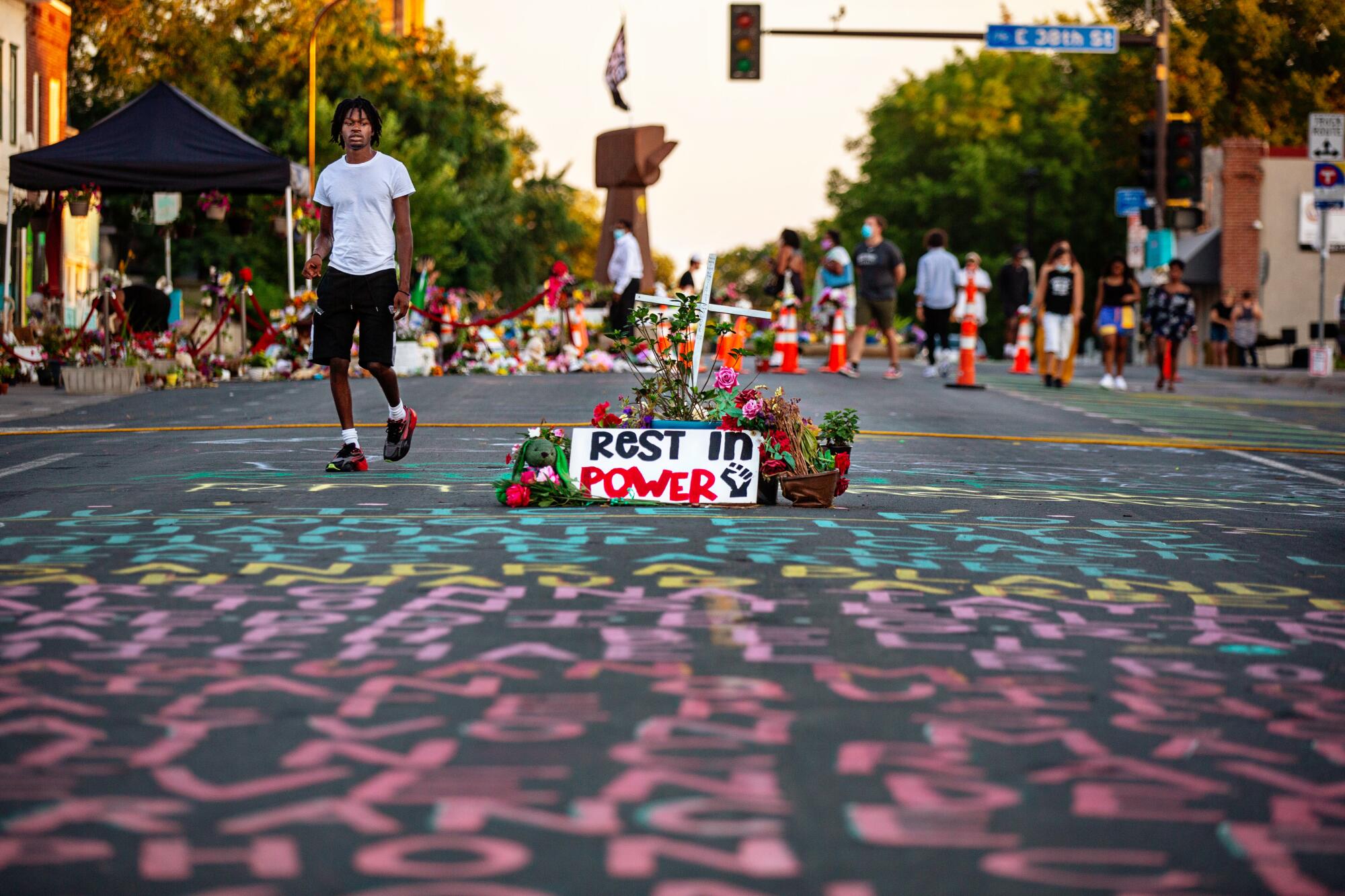
In recent weeks, Means and Shanene Herbert, another organizer, created a pamphlet titled, “A Guide for White Allies in Black Spaces of Mourning,” which they handed out to any white people they saw gathered at the memorial.
“This is a space community members want to decentralize white feelings and prioritize Black pain,” a section read. “We ask that you honor the space.”
Many of the murals painted in the area that depict Floyd were done by white artists who have since grown popular on social media as people pose in front of their work, Herbert said.
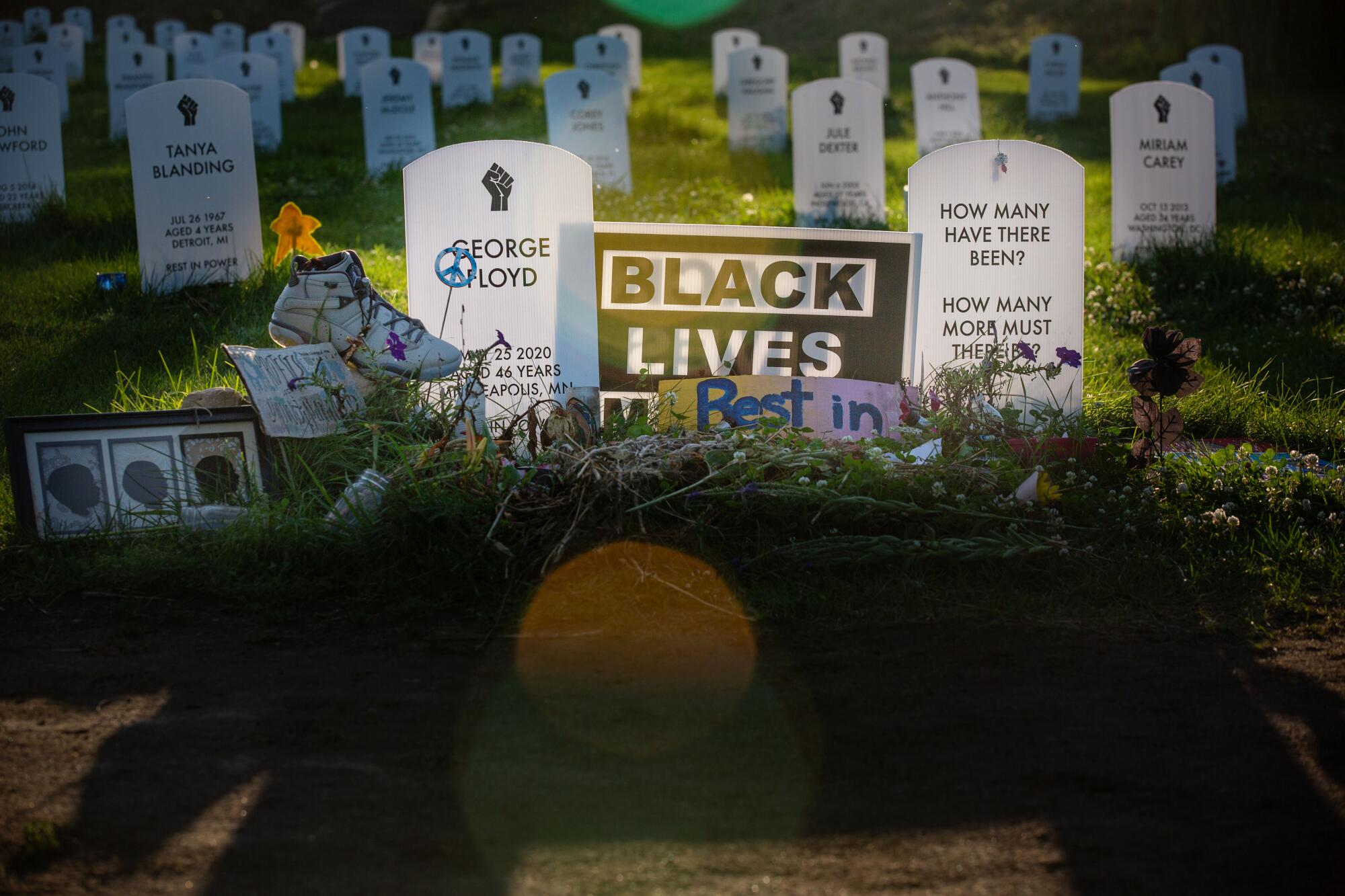
During a recent afternoon, a white woman stood in a parking lot taking portraits of people. She charged a few dollars if people wanted a print of the image. Herbert looked over at the woman and sighed — it felt so exploitative, she said.
“This is about respecting the pain experienced daily by Black people, and there is so much hurt in this area,” she said.
On another evening that week, Smith organized a gathering of about a dozen people outside the house of City Councilwoman Alondra Cano, who has spoken in support of dismantling the Police Department.
The topic got a lot of coverage — and gained traction — in the weeks after Floyd’s death.
Recently a poll from the group Run for Something, which supports left-leaning candidates, found that among likely voters in several swing states, less than half of Black respondents said they would be more likely to support a political candidate who made defunding the police a priority.
Smith thinks it’s a flawed premise. “We’re asking them to get rid of the bad cops, not get rid of them all,” she said.
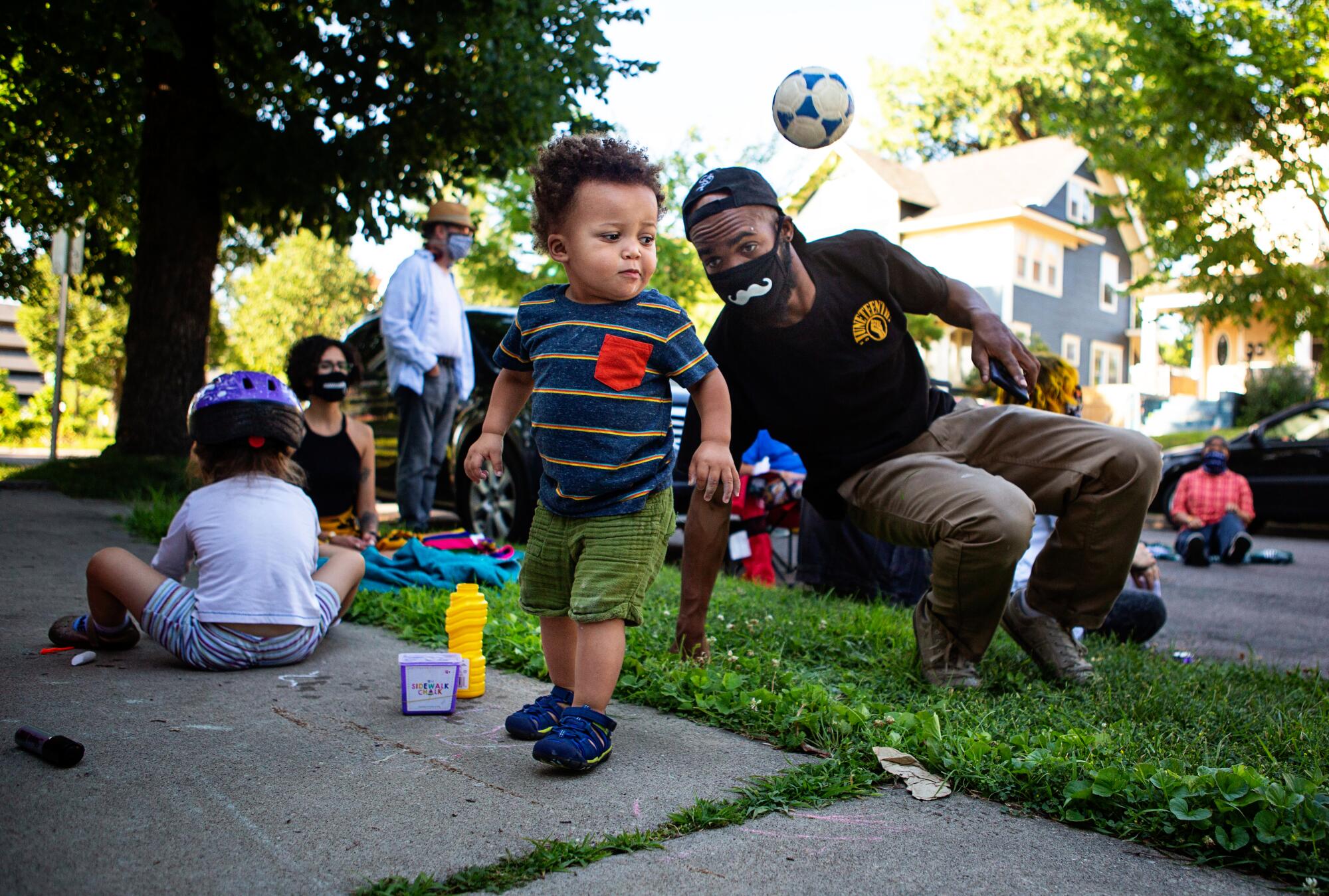
During the gathering outside the local lawmaker’s house, an older Black resident and activist, Al Flowers, said he thought it was inconceivable to assume that abolishing the police will help Black people. The police, he said, do offer a sense of safety and order.
Flowers — who filed an excessive-force lawsuit against the Minneapolis Police Department and won a settlement after officers allegedly assaulted him in his home in 2014 — said he thought focusing on disbanding the department missed the mark. Demanding abolishment instead of reform is easy when you’re in a position of privilege, he said, looking over at some white people in the crowd.
“They are killing us, not y’all,” Flowers said, sighing. “Coronavirus, police, it seems everything is killing us.”
More to Read
Sign up for Essential California
The most important California stories and recommendations in your inbox every morning.
You may occasionally receive promotional content from the Los Angeles Times.
